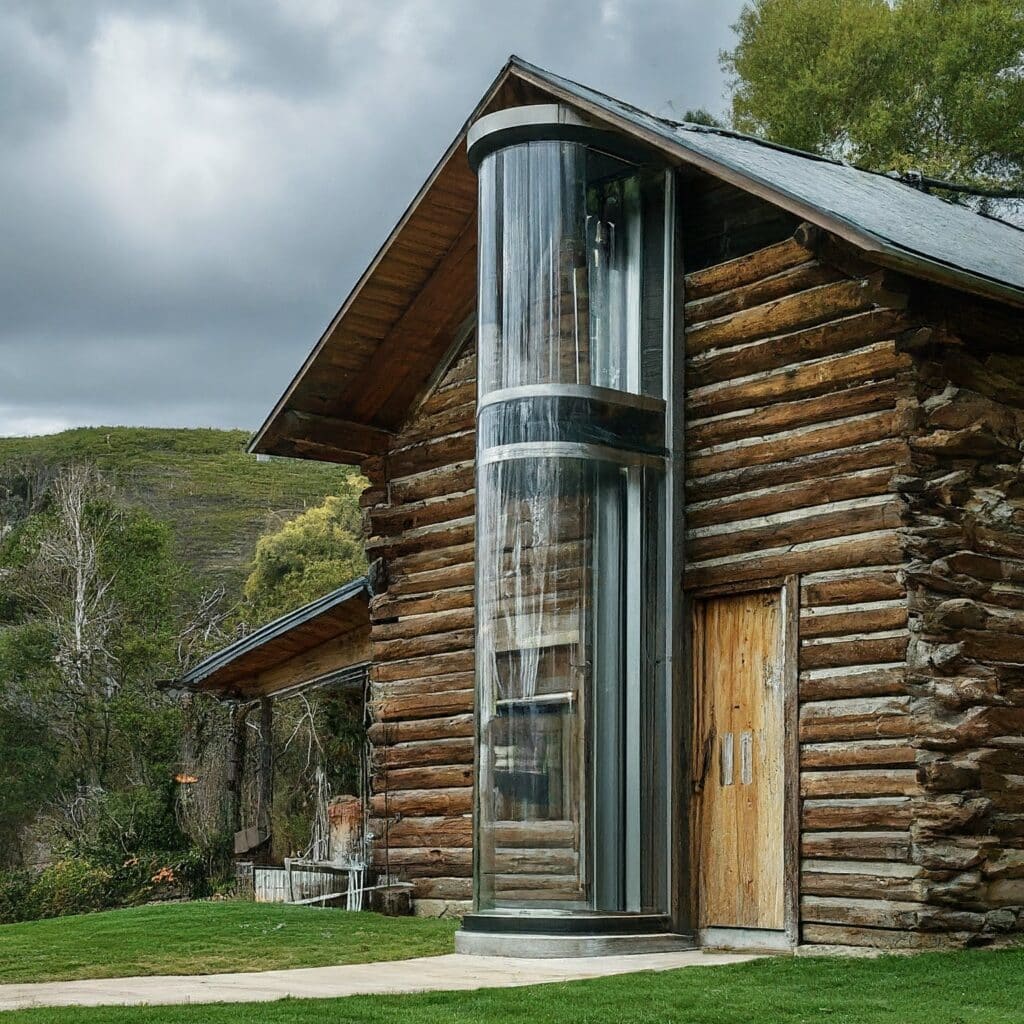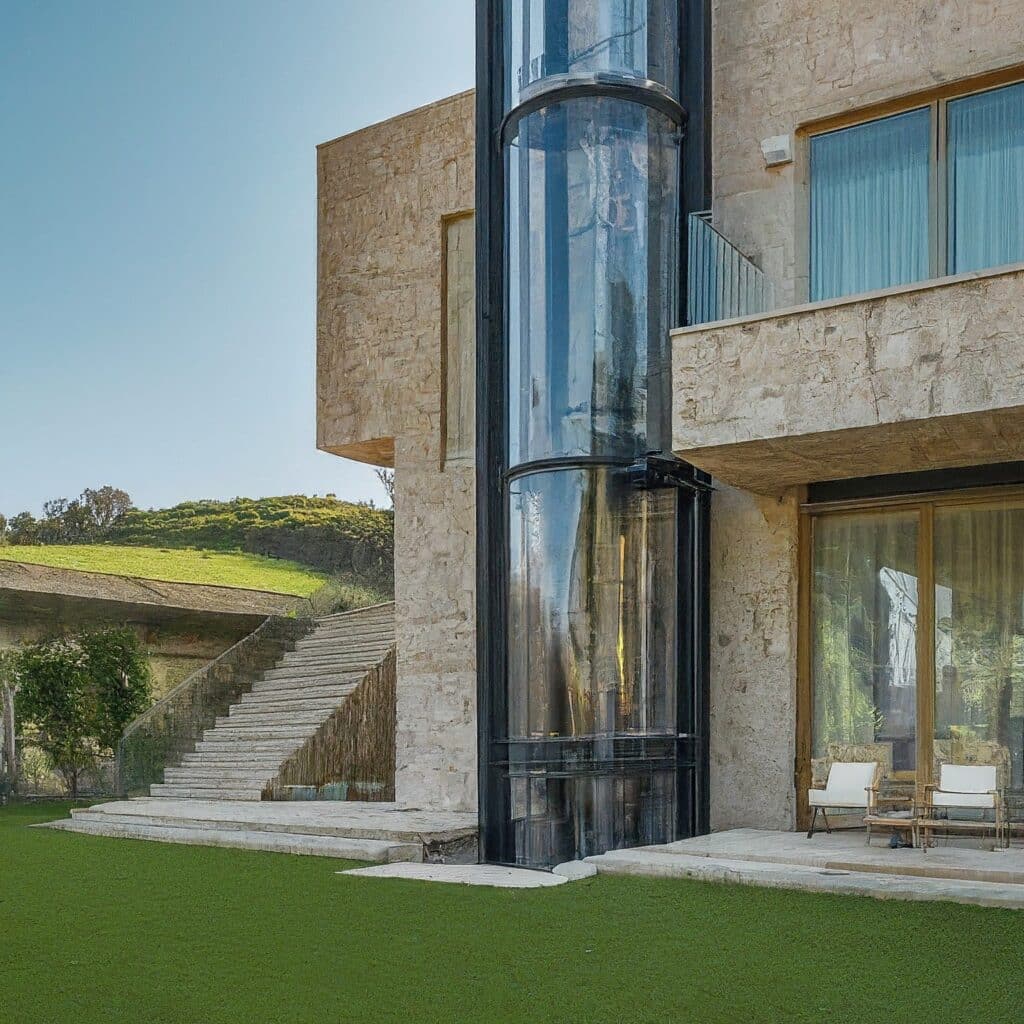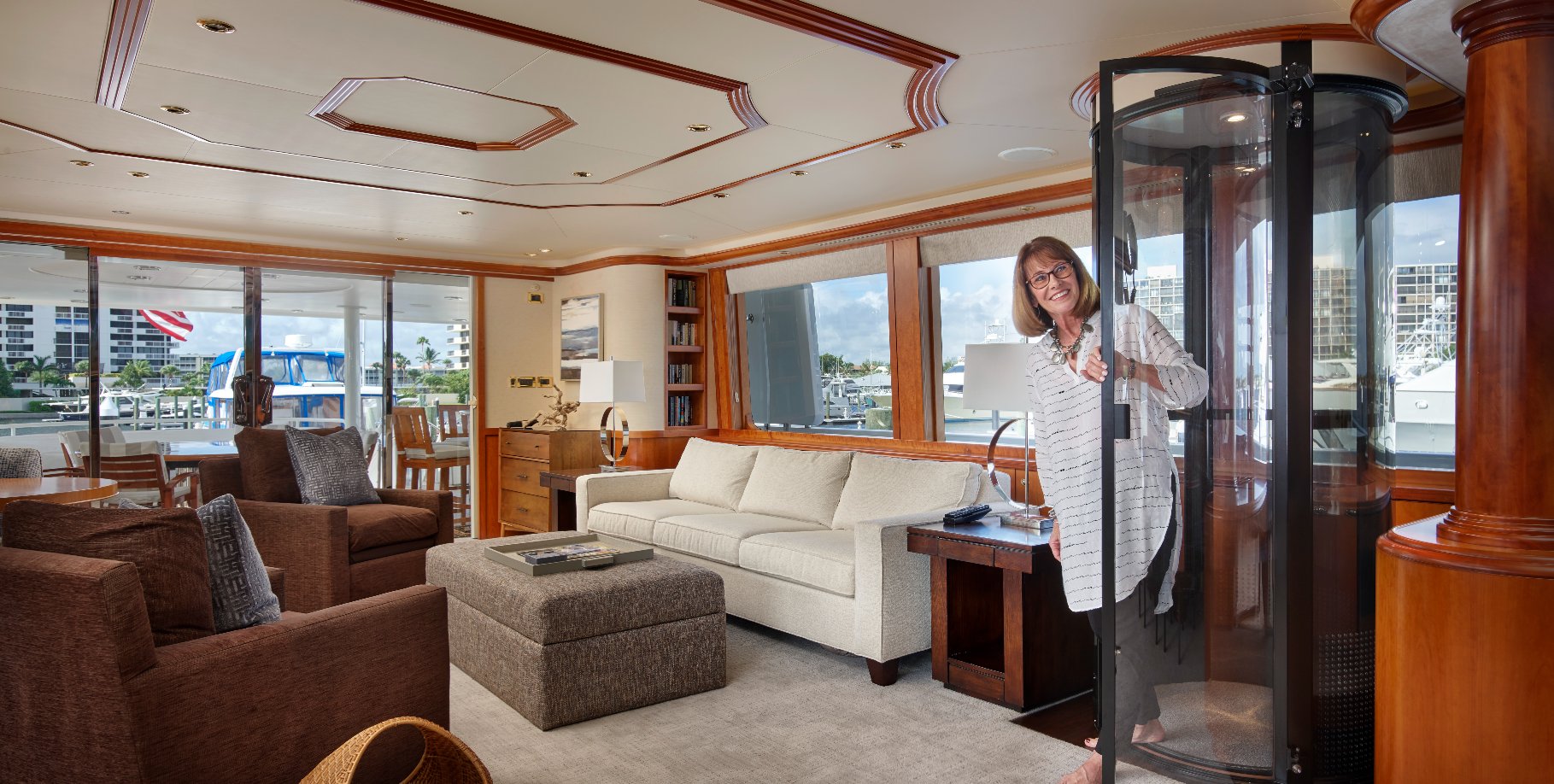For many individuals with limited mobility, navigating curved staircases becomes a significant obstacle within their own homes. Straight stairlifts, while effective for linear staircases, offer no solution for these winding paths. Thankfully, curved residential stairlifts rise to the challenge, providing a safe and dignified way to regain independence in a multi-level home. This article delves beyond the basics, exploring the intricacies of curved stairlifts, their technical specifications, and advanced features that enhance functionality and user experience.
Understanding Curved Stair Lifts Design and Functionality

Unlike their straight counterparts, curved stairlifts boast a custom-designed track that meticulously follows the unique curvature of your staircase. This track, from high-grade steel, securely anchors to the treads or wall. It ensures a stable and smooth ride. The chair itself glides effortlessly along this track, powered by a silent and efficient electric motor.
Here’s a breakdown of the key components of curved stair lifts:
- Track: The heart of the system, the curved track need measurement and fabricated to perfectly match the specific turns and inclines of your staircase. It can be single or double rail depending on the stair configuration and weight capacity requirements.
- Drive System: A powerful yet quiet electric motor propels the chair along the track. Advanced models may incorporate self-leveling features to ensure a comfortable ride even on uneven landings.
- Chair and Seat: Designed for comfort and safety, the chair features a swivel seat, armrests, and a safety belt. Advanced options may include powered footrests, height-adjustable seats, and weight sensors for automatic operation.
- Control System: Easy-to-use joystick or button controls allow users to operate the chair effortlessly. Some models offer additional features like remote control for added convenience.
- Safety Features: Curved stairlifts prioritize safety with features like seatbelts, emergency stop buttons, and automatic obstacle detection.
Technical Considerations for Curved Stair Lifts Selection
Beyond aesthetics, several crucial technical factors influence the selection of a suitable curved stairlift:
- Stairway Dimensions: The curvature, width, and length of your staircase will determine the feasibility of installing a curved stairlift and the specific track design.
- Weight Capacity: Curved stairlifts come with varying weight capacities, ranging from 300 to 400 lbs. Choose a lift that can comfortably accommodate your weight and any potential future needs.
- Power Source: Most curved stairlifts operate on rechargeable batteries, ensuring uninterrupted operation even during power outages. Some models may also have a direct AC power connection for continuous charging.
- Additional Features: Consider features like powered footrests, swivel seats, and automatic folding mechanisms for enhanced convenience and ease of use.
Advanced Features and Technologies in Curved Stairlifts

The world of curved stairlifts is constantly evolving, with manufacturers incorporating innovative technologies to improve functionality and user experience. Here are some noteworthy advancements:
- Self-Leveling Technology: This feature ensures a constant horizontal plane for the chair, even on uneven landings, providing a more comfortable and secure ride.
- Obstacle Detection: Advanced sensors can detect obstacles on the track, automatically stopping the lift to prevent collisions. This is particularly beneficial for homes with pets or children.
- Smart Home Integration: Some models can be integrated with smart home systems, allowing for voice control operation or remote monitoring of the lift’s status.
- Touchscreen Controls: Modern curved stair lifts may incorporate intuitive touchscreen interfaces for easy operation and customization of settings.
- Weight Sensors: For added convenience, weight sensors can automatically trigger the lift to move when a user sits down, eliminating the need for manual control activation.
Installation, Maintenance, and Safety Considerations for Curved Stairlifts
Curved stairlifts are typically installed by trained professionals who will assess your staircase, measure dimensions, and customize the track design. The installation process is generally minimally invasive, requiring minimal modifications to your existing staircase.
Regular maintenance is crucial for ensuring the smooth and safe operation of your curved stairlift. Most manufacturers recommend annual professional servicing to check for wear and tear, lubricate components, and ensure optimal performance.
Safety remains paramount. Ensure the user receives proper training on operating the lift safely. Additionally, keep the track clear of obstacles and make sure the user wears a seatbelt while using the lift.
Inner Workings of a Curved Stairlift
At the heart of a curved stairlift lies the intricate interplay of mechanics and electronics. Unlike a straight stairlift that glides along a linear track, a curved lift must adapt to the unique twists and turns of your staircase. This demands a custom-designed track, meticulously crafted from high-grade steel. This “dance floor” for the chair is anchored securely to the treads or wall, ensuring a stable and smooth journey.
Here’s a deeper look at the key components that orchestrate this sophisticated ballet of movement:
- Track Innovation: The curved track is no longer a simple bend. Advanced fabrication techniques allow for the creation of single or double rail systems that seamlessly follow the curvature of your staircase. These tracks can even incorporate inclines and landings for a truly customized experience.
- The Power Behind the Ride: A silent and efficient electric motor propels the chair along the track. Modern advancements in motor technology prioritize quiet operation, ensuring a peaceful ride that doesn’t disrupt the tranquility of your home.
- Beyond the Basics: Drive Technology Takes Center Stage: Gone are the days of simple on/off motors. Today’s curved stairlifts boast sophisticated drive systems with features like self-leveling technology. This ensures a consistently horizontal plane for the chair, even on uneven landings, providing a comfortable and secure experience
- The User Experience: Redefining Comfort and Control: The chair itself becomes an extension of the user’s comfort. Advanced ergonomic design principles create a supportive and secure seating experience. Features like powered footrests, height-adjustable seats, and swivel mechanisms further enhance user comfort and ease of operation.
- Safety First: A Multi-Layered Approach to User Protection: Safety remains paramount in curved stairlift design. Multiple layers of protection are incorporated, including seatbelts, emergency stop buttons, and obstacle detection systems that utilize cutting-edge sensor technology.
Pushing the Boundaries: Advanced Technologies Shaping the Future of Curved Stair Lifts
The realm of curved stairlifts is a dynamic one, constantly evolving to meet the ever-changing needs of users. Here’s a glimpse into some of the cutting-edge technologies that are shaping the future of curved stairlifts:
- Artificial Intelligence Makes an Entrance: Imagine a stairlift that learns your habits and anticipates your needs. AI-powered systems are on the horizon, capable of adapting to usage patterns and even offering voice-activated controls.
- The Internet of Things (IoT) Steps In: Curved stair lifts are poised to integrate seamlessly with smart home systems. This could allow for remote monitoring of the lift’s status, integration with voice assistants for hands-free operation, and even predictive maintenance capabilities.
- Biometric Integration for Personalized Comfort: The future may see curved stairlifts that can adapt to the user’s biometrics. Imagine a seat that automatically adjusts to your body temperature or posture for ultimate comfort and support.
Beyond Mechanics: The Human Element in Curved Stairlift Design
While the technical marvels of curved stairlifts are undeniable, it’s crucial to acknowledge the human element that goes into their design. Curved stairlifts are not merely machines; they are tools for regaining independence and maintaining a sense of dignity within the home. User-centered design principles are paramount, ensuring intuitive controls, easy-to-use features, and a focus on aesthetics that complements the existing home environment.
The Pneumatic Contender: Exploring the Feasibility of Curved Pneumatic Stairlifts
Curved residential stairlifts have carved a niche in the accessibility market, offering a reliable solution for navigating those challenging curved staircases. However, the traditional electric motor-driven approach isn’t the only contender in this arena. Pneumatic stairlifts, powered by compressed air, have emerged as a potential alternative, sparking discussions about their feasibility and potential advantages in specific scenarios.
Delving into the Pneumatic Difference:
Unlike their electric counterparts, pneumatic stairlifts utilize a pressurized air system to propel the chair along the track. This compressed air is typically stored in a tank located at the top or bottom of the staircase. When activated, the air is released and channeled through a piston or diaphragm, generating the force that moves the chair.
Advantages and Considerations for Curved Pneumatic Stairlifts:
While the concept of pneumatic curved stairlifts is intriguing, it’s essential to consider both the potential advantages and limitations:
- Reduced Complexity: Pneumatic systems can be inherently simpler than electric ones, potentially leading to easier maintenance and fewer mechanical components prone to wear and tear.
- Silent Operation: Compressed air systems operate quietly, potentially offering a quieter ride compared to some electric motors.
- Power Outages? No Problem: Pneumatic stairlifts wouldn’t be reliant on electricity to function, ensuring continued operation even during power outages, provided the compressed air tank remains pressurized.
However, there are also limitations to consider:
- Track Design Challenges: Adapting a pneumatic system to a curved track might pose engineering challenges compared to a well-established electric motor approach.
- Limited Power: While sufficient for most users, compressed air systems might have limitations in terms of weight capacity compared to some electric motors.
- Refilling Considerations: The compressed air tank would require periodic refilling, which could be a logistical concern for some users.
The Future of Pneumatic Curved Stairlifts:
The concept of pneumatic curved stairlifts is still in its early stages. While they hold promise for specific applications, further research and development are needed to address the technical challenges associated with curved track design and overall system efficiency. Additionally, safety considerations specific to pneumatic systems in a home environment would need to be thoroughly addressed.








